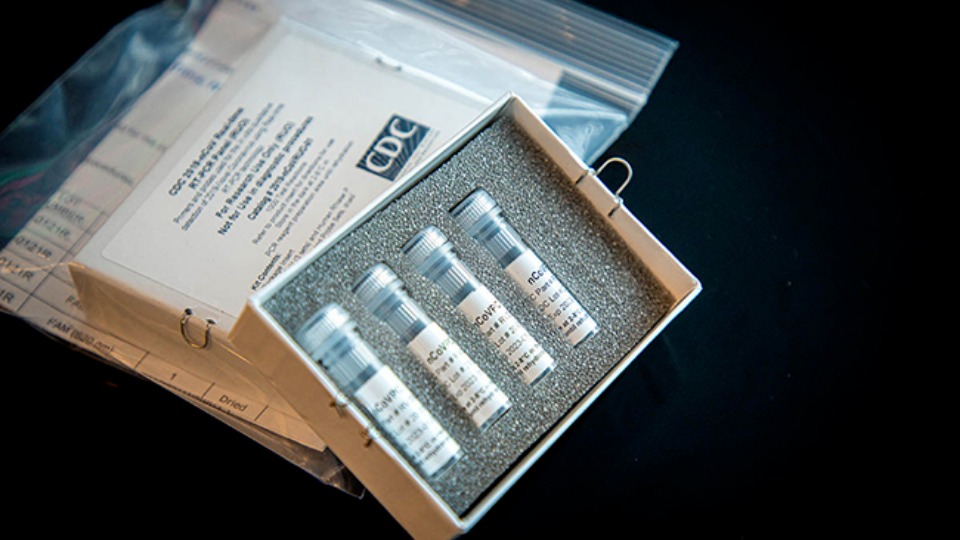
WASHINGTON—The federal government’s effort to help the millions of people harmed—physically, economically, or both—by the coronavirus pandemic suffers from myriad problems, a new independent report says.
And the non-partisan Government Accountability Office adds that in states’ own rush to get jobless aid to people, such as gig workers, who don’t qualify for regular unemployment benefits, many states paid close to weekly minimum benefits, vowing to catch up later.

Not only that, but in October, for the first time since the pandemic began, the number of people businesses reported to be permanent job losers due to coronavirus-forced layoffs (3.7 million) exceeded the number businesses said are just on temporary layoff (3.2 million).
The report, Urgent Actions Needed to Better Ensure an Effective Federal Response to COVID-19, makes 11 key recommendations to agencies to improve the federal anti-pandemic effort by tightening up controls and auditing, but it does not cast blame on political appointees of the GOP Trump regime.
But Trump’s Small Business Administration and his Treasury Department, prime distributors of government funds to business, are notably behind, the report says.
GAO also wants lawmakers to hold executive branch agencies’ feet to the fire.
“To hold agencies accountable and increase transparency, Congress should consider, in any future legislation allocating relief funds, designating all executive agency programs and activities making more than $100 million in disbursements of funds as ‘susceptible to significant improper payments’”—to firms that don’t deserve them or people who commit fraud—and require tight controls, GAO said.
Those safeguards in the next aid package—an idea the Senate’s ruling Republicans now reject—would monitor when and how pandemic aid money is spent, and, in the case of the $670 billion Small Business Administration’s Paycheck Protection Program corporate subsidy, what it’s spent on.
News reports show big firms getting much of those funds. GAO says the firms were supposed to spend the money to keep workers on the job but weren’t required to prove they actually did so. Neither did airlines, who got a separate subsidy, GAO said.
One person has already pled guilty to conspiring to defraud the PPP program by getting 18 loans for four shell companies, to pay non-existent workers. He grabbed $1.4 million before getting caught. Another 130 people are “under investigation,” said GAO.
While GAO does not cast blame, Trump and his minions must shoulder it, as the Oval Office occupant first publicly denied the virulence of the coronavirus pandemic—even though he knew otherwise—then predicted it would disappear by summer, hawked fake cures, and overall, dumped the entire responsibility for battling the modern-day plague on the states, without money or supplies to meet it.
As a result, a close reading shows, the federal response to the coronavirus was irregular, often disconnected, unfocused, and weak.
Democratic President-Elect Joe Biden, who beat Trump in November, has vowed to change that.
“The federal government must act swiftly and aggressively to help protect and support our families, small businesses, first responders, and caregivers essential to help us face this challenge, those who are most vulnerable to health and economic impacts, and our broader communities–not to blame others or bail out corporations,” says the introduction to Biden’s seven-point anti-coronavirus battle plan.
That’s important because the problems the GAO highlighted remain, as its report covers government action, and inaction, through October. Meanwhile, the coronavirus is spreading. Internal government maps, provided to Trump’s coronavirus team and leaked to Yahoo! News, show much of the continental U.S. is in varying hues of red, indicating high infection rates.

“For the week ending Nov. 15, a map of ‘incidence rates’ shows a large swath of the country draped in dark red, indicating counties with more than 500 cases per 100,000 people. The nationwide incidence was almost 323 per 100,000, a startling increase of more than 46% week over week when much of the country was still coded pink,” the story says.
The deepest red areas are Illinois, Minnesota, Wisconsin, western Montana, all but a few small counties in each Dakota, the Mississippi River valley down to far northeastern Arkansas, most of Kansas and Nebraska, and far southeastern New Mexico plus adjacent areas of Texas.
GAO’s recommendations are also significant because millions of people rely on the jobless benefits—both traditional state benefits and special pandemic-related aid—due to run out by the end of this month.
And GAO says weekly jobless benefit reports of initial unemployment benefit claims—which have been running at 20 million-plus combined weekly for months—may not be completely accurate.
That’s because some states are far behind in processing claims, and different states skip different weeks of reports, skewing the figures. Arizona is an example. In the week of June 27, the state reported 2.3 million new jobless benefit claimants for all the programs, state and federal. But it didn’t even file a report covering the following week, which ended on Independence Day.
“Had Arizona submitted data, DOL likely would have reported a significant increase in claims from the prior week instead of a decrease” of 200,000 jobless claims nationwide, GAO said. “Arizona stopped reporting data that week due to suspected fraud in the Pandemic Unemployment Assistance program, according to DOL officials.”
But in another indication of problems with doling out the dollars, GAO did not say whether the suspected Arizonan fraudulent claims were real.
States ran into an even bigger problem when they tried to distribute jobless aid to workers, such as “independent contractors,” farm workers, and groups legally omitted from traditional state-run jobless benefits, such as gig economy workers, musicians, and artists, who are. As a result, states didn’t have payroll data for those workers.
Unions, notably performing arts unions, lobbied long, hard, and successfully for federal aid for such workers. The Cares Act, passed in March, approved it. The workers got the aid, but it wasn’t very much.
“Specifically, 27 of the 41 states” replying to GAO “reported average weekly Pandemic Unemployment Assistance (PUA) benefits paid were within 25% of the state’s minimum PUA benefit amount. Ten of these states reported average benefits within 10% of the minimum. This suggests that many individuals in these states are receiving the minimum benefit.”
It cited Maine as an example. Its minimum PUA benefit is $172 per week for gig workers, independent contractors, and other recipients. Its average benefit in September was $194 per week. GAO said that showed most Mainers got the minimum.
The state’s Labor Department said “to expedite payments, individuals initially received the minimum PUA benefits, and the state planned to update benefit amounts based on tax information, starting at the end of July. If a new benefit amount was determined, individuals would receive retroactive benefits payments for all weeks previously paid,” GAO reported. Other states planned to do the same thing.

And as of the end of September, nine million of those gig workers, independent contractors, and others who were supposed to get the pandemic unemployment aid still had yet to see their first checks.
Other key problems GAO identified included but were not limited to:
– Personal Protective Equipment shortages
Reports to GAO from 47 of the 56 state, D.C., and territorial emergency management agencies it surveyed showed nine states had coronavirus swab shortages, but 24 were short of “rapid point-of-care” tests. The other nine agencies did not respond.
While “32 states were greatly or completely confident in their ability to fulfill future requests for face shields and goggles,” 15 were slightly confident—at best—in providing protective gloves. Another 17 “were greatly or completely confident” they could. The rest were in between.
More ominously, 45 of the 46 states reported health care providers turned to them for additional supplies of PPE when the providers ran short and 11 states said they couldn’t fulfill all the requests.
The problem could get worse, GAO said. “Ongoing constraints with the availability of certain types of personal protective equipment and testing supplies remain due to a supply chain with limited domestic production and high global demand,” the report adds.
The Trump regime’s agencies responsible for the supply chain disputed GAO’s findings.
Even before the pandemic’s official proclamation on March 13, National Nurses United was campaigning to get Trump to invoke the Defense Production Act to force firms to manufacture more PPE. He didn’t.
– Vaccine distribution confusion
Even though companies are racing to produce anti-coronavirus vaccines, and get federal OK for testing them, the states face problems in distributing them. The vaccines may be available; the vaccine kits are another matter. Thirty-eight states fear they won’t have the kits when the anti-coronavirus vaccine is ready.
“State and other nonfederal partners experienced three types of challenges in working with the federal government to meet supply needs: (1) knowing which federal supplies would arrive and when; (2) confirming the right entities received correct and usable supplies when federal programs delivered them directly to local organizations or entities, and; (3) determining how to plan and budget for future supply needs,” GAO said.
– Veteran neglect
The Veterans Affairs Department has fallen down on the job of caring for 20,000 vets in state veterans nursing homes—and stopped reporting its results, too.
“In March 2020, VA instructed its contractor to stop in-person inspections due to concerns about COVID-19. As of September, these inspections had not resumed, leaving veterans at risk of receiving poor quality care. Additionally, VA does not collect timely data on the number of COVID-19 cases and deaths occurring at each state veterans home, hindering its ability to monitor and take steps to mitigate the spread of COVID-19 in these homes,” GAO says.
The entire report is at https://www.gao.gov/products/GAO-21-191










